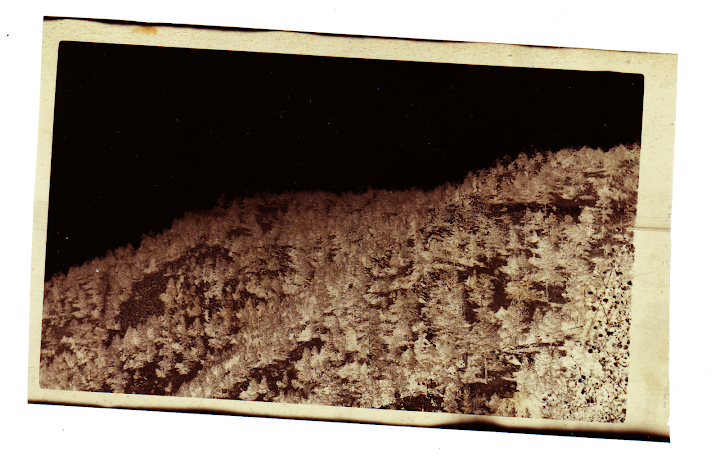
Last Saturday, I finished Make's crackerbox amp project. This is extremely exciting, as it represents a) a successful first foray into the twin lands of circuit diagrams and building electronics from scratch, and b) the actualization of my own electric mandolin!
 Janky janky janky. But it works! (I had very limited wire resources... hence, everything is the same color.)
Janky janky janky. But it works! (I had very limited wire resources... hence, everything is the same color.) This soldering job reminds me of Kate Beaton's fat pony: ugly and incompetent, but kind of endearing...
This soldering job reminds me of Kate Beaton's fat pony: ugly and incompetent, but kind of endearing...While Make seems to have some kind of sponsorship thing with Radio Shack, I don't recommend going there for parts. I moseyed down there one evening, and walked out feeling like I'd lost two hours (including bus time) and spent twice as much as I should've for the components I got. Even if you go online to avoid getting ripped off as much, it could easily cost more than $5 if you don't have most of the stuff already on hand. Still, no complaints - I ended up with this...
 :)
:)The best reference material came from http://www.kpsec.freeuk.com/ . Amazing resource for semi-newcomers to the field of electronic jiggery-pokery. I also highly recommend checking out cairn's comments / linked PCB layout pic on the article page. While it was fun to slowly learn how to read the circuit diagram, at times it got extremely frustrating; I found that layout diagram once I was done, and kinda wished I'd had it all along. (Still, it was gratifying to turn the thing on and have noise come out, when I'd wondered if it would do anything but set the carpet on fire.)
 With the piezo mounted! I tried poking/cutting holes in the speaker cone for more distortion, but it doesn't seem to make much of a difference... perhaps because I only have an 8-ohm speaker. It came from the local Kiwanis rummage sale - they have a bunch, and I paid a solitary buck for this one.
With the piezo mounted! I tried poking/cutting holes in the speaker cone for more distortion, but it doesn't seem to make much of a difference... perhaps because I only have an 8-ohm speaker. It came from the local Kiwanis rummage sale - they have a bunch, and I paid a solitary buck for this one.This amp exists mainly to give grittiness and edge to the mandolin, and that it does, most noticeably in the upper registers. I chose to use surface-mounted pickups because there's no way I'm taking a drill to the mandolin. So I'm going with a piezo wired to a 1/4" plug, courtesy of the excellent Matt Endahl.
Next step: build a case for it. I settled on some 2-walled plastic with linear cells, which David and I pulled out of the art museum dumpster a while back.
 Cut the plastic into three panels, for optimal stability (that whole 3-legs-don't-wobble thing)... plus mega style points.
Cut the plastic into three panels, for optimal stability (that whole 3-legs-don't-wobble thing)... plus mega style points. Loud = volume, Angry = gain :)
Loud = volume, Angry = gain :)A lot of people asked about volume vs. gain. As I understand it, the chip already amplifies input sound by a certain amount. The gain feeds from the chip back into it, so that basically controls how much the chip amplifies the signal (sound). (Past a certain level, this creates clipping, which makes it sound gritty.) The volume is between the chip and the speaker ("after" the chip), so it controls how much of this already-amplified signal is put through the speaker.
 Left side: on/off toggle, 1/4" jack
Left side: on/off toggle, 1/4" jackCenter: volume rheostat, gain potentiometer
Right: speaker
Bottom: PCB, 9V battery
 Finished! Here's a short sound sample with the mandolin. There are some images up already on Facebook, as I brought it to Build Night last night at AHA...
Finished! Here's a short sound sample with the mandolin. There are some images up already on Facebook, as I brought it to Build Night last night at AHA... Rocking out (as best I am able) at the shop.
Rocking out (as best I am able) at the shop. We also taped it up to the illustrious Amanda's amazing propane tank steel drum. That thing sounds amazing, though as with the mandolin, only the higher registers worked with the amp's distortion. Apparently, I can switch out one of the capacitors, and it'll pick up more bass... so I guess that's a logical next step with this thing. I already tried hooking up some red LEDs inline with the speaker (so they'd pulse along with the sound), but alas, they were too much of a voltage drain and barely any sound came out.
We also taped it up to the illustrious Amanda's amazing propane tank steel drum. That thing sounds amazing, though as with the mandolin, only the higher registers worked with the amp's distortion. Apparently, I can switch out one of the capacitors, and it'll pick up more bass... so I guess that's a logical next step with this thing. I already tried hooking up some red LEDs inline with the speaker (so they'd pulse along with the sound), but alas, they were too much of a voltage drain and barely any sound came out.The last couple of photos are from AHA's Facebook page; I believe they were taken by Josh, one of the proprietors of Digital Ops, our venue. I am inexpressibly happy that this space, the group, and the people in it exist. Dudes are seriously awesome.






























